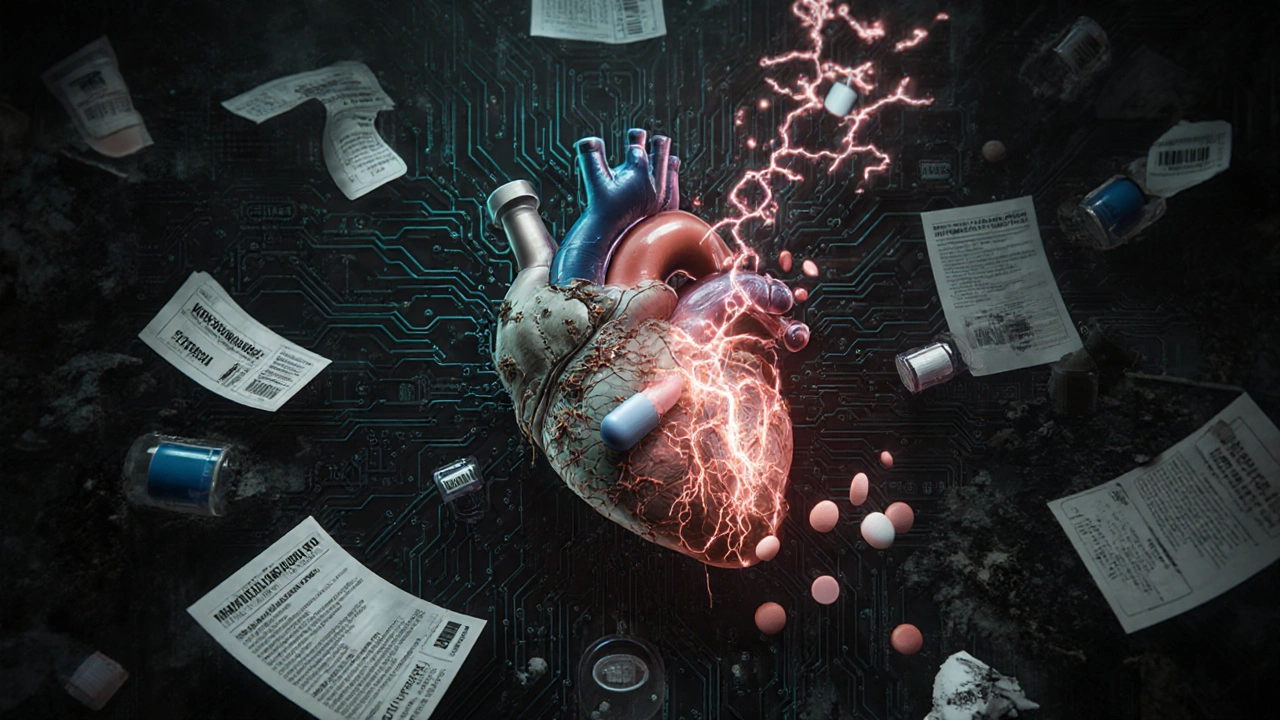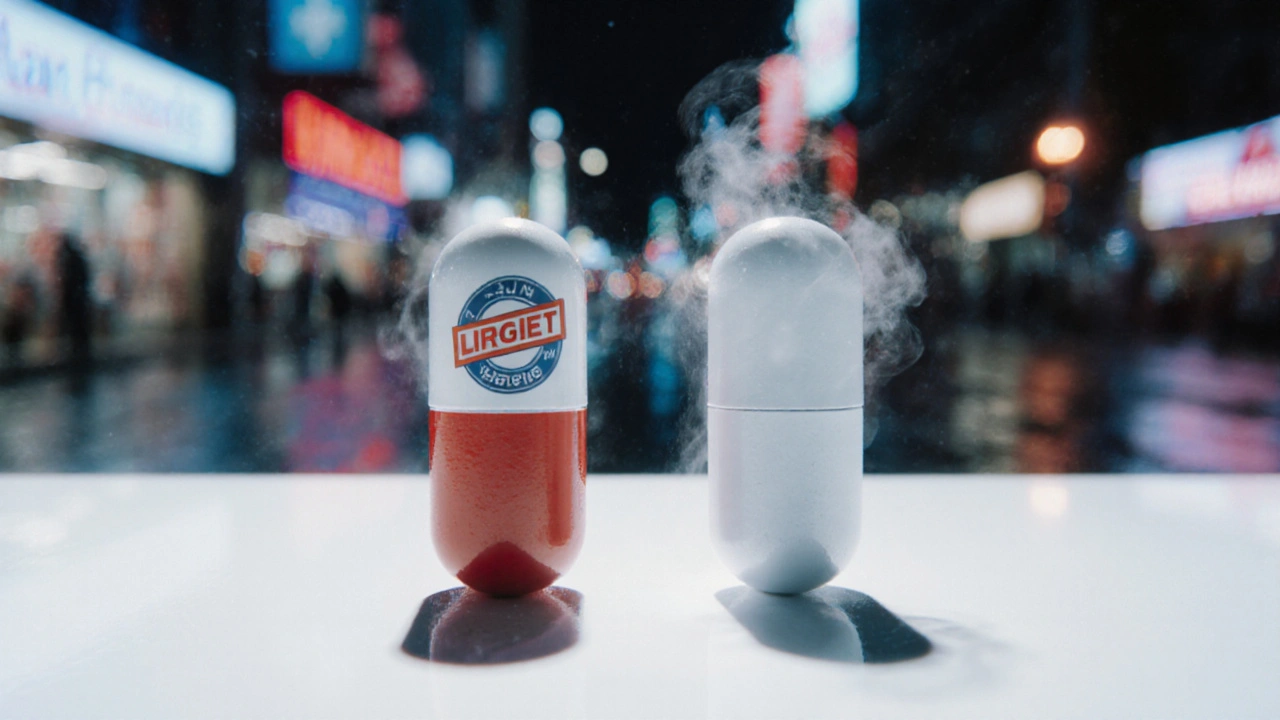When you fill a prescription, you might see two options: the name you recognize from TV ads, or a long chemical name you’ve never heard of. The second one? That’s a generic medication. And if you’re paying out of pocket, it could save you hundreds - even thousands - of dollars a year.
Let’s be clear: generic drugs aren’t cheap because they’re weak. They’re cheap because the system lets them be. The same active ingredient. The same effectiveness. The same safety standards. Just a fraction of the price.
What Exactly Is a Generic Medication?
A generic medication contains the exact same active ingredient as its brand-name version. If your doctor prescribes lisinopril for high blood pressure, the brand-name version is Zestril. The generic? Still lisinopril. Same molecule. Same job in your body. Same results.
The U.S. Food and Drug Administration (FDA) doesn’t just approve generics lightly. To get approval, a generic drug must prove it delivers the same amount of active ingredient into your bloodstream at the same rate as the brand-name drug. That’s called bioequivalence. The FDA requires it to be within 80-125% of the brand-name absorption rate - meaning your body processes it identically.
What’s different? The color, shape, flavor, or inactive ingredients - things like fillers or dyes. These don’t affect how the drug works. They’re just there to make the pill look different or easier to swallow. You won’t find the same logo or packaging. That’s because generics don’t pay for expensive advertising campaigns.
How Much Money Can You Really Save?
On average, generic medications cost 85% less than their brand-name equivalents. That’s not a guess. That’s the FDA’s official figure.
Here’s what that looks like in real dollars:
- A 30-day supply of a brand-name drug that costs $1,400? The generic version? Under $60.
- A medication priced at $88 per milliliter? The generic drops to under $10 per milliliter - saving patients over $3,300 per prescription on average.
- One popular cholesterol drug went from $150 per month to $4. That’s a 97% drop.
Over the last decade, generic drugs saved U.S. patients more than $2.2 trillion. That’s not a typo. Two point two trillion dollars.
For people on Medicare Part D, 90% of the top 184 most prescribed generic drugs cost less than $20 for a 30-day supply at Costco - even without insurance. At many pharmacies, common generics like metformin, atorvastatin, or levothyroxine can be had for under $10, sometimes even $4.
Even with insurance, switching to generics cuts your out-of-pocket costs. Between 2010 and 2020, what you paid directly for generic prescriptions dropped by nearly half. Total spending - including what insurers paid - fell by 80%.
Why Are Generics So Much Cheaper?
Brand-name drug companies spend billions developing a new drug. They run clinical trials, pay for marketing, and hold patents that block competitors for 20 years. When that patent expires, other companies can step in.
Generic manufacturers don’t need to repeat those expensive trials. The safety and effectiveness are already proven. All they need to show is that their version works the same way in your body. That’s called an Abbreviated New Drug Application (ANDA). It’s faster. It’s cheaper. And it’s why hundreds of new generics hit the market every year.
With more companies making the same drug, prices drop fast. Competition drives prices down - sometimes to pennies per pill. There are now over 100 generic drug manufacturers in the U.S. alone, all fighting for market share.

Are Generics Really as Good as Brand-Name Drugs?
Yes. And the science backs it up.
The FDA requires generic drugs to meet the same quality, strength, purity, and stability standards as brand-name drugs. The same factories that make brand-name pills often make the generics too - just under different labels.
Some patients report feeling different on a generic version. Maybe they think it’s less effective. But studies show these differences are rarely real. They’re often caused by:
- Placebo effect - expecting something to be different because it looks different.
- Changes in inactive ingredients - like a new filler that causes mild stomach upset.
- Switching between different generic brands - each might use slightly different fillers.
For most drugs, switching between brand and generic - or between generic brands - causes no issue. But there are exceptions. Drugs with a narrow therapeutic index - where the difference between a helpful dose and a harmful one is tiny - need more care. Examples include levothyroxine (for thyroid), warfarin (a blood thinner), and some seizure medications.
If you’re on one of these, talk to your doctor. You might be advised to stick with one brand or generic version. But even then, switching isn’t dangerous - it just needs monitoring.
How to Start Using Generic Medications
Getting started is easier than you think.
- Ask your pharmacist: "Is there a generic version of this drug?" They’ll know instantly.
- Ask your doctor: "Can I take the generic?" Most doctors write prescriptions with "dispense as written" only if there’s a medical reason not to switch.
- Check your insurance formulary. Most plans have lower copays for generics - sometimes as low as $0.
- Compare cash prices. At pharmacies like Costco, Walmart, or Target, generic prices are often cheaper than your insurance copay. You don’t need insurance to use these deals.
- Try the Mark Cuban Cost Plus Drug Company (MCCPDC). Launched in 2022, it offers transparent pricing on over 200 generics - often 40-80% lower than traditional pharmacies.
Pharmacists are trained to help with substitutions. In most states, they can switch your brand-name prescription to a generic unless your doctor says no. You don’t need to ask - but you should confirm.
What About Biosimilars? Are They the Same?
Biosimilars are the next wave. They’re not exact copies like traditional generics - because they’re made from living cells, not chemicals. Think insulin, rheumatoid arthritis drugs, or cancer treatments.
They’re not called generics. But they’re the same idea: lower-cost alternatives to expensive biologic drugs. The FDA approves them using similar standards. They’re proven to work just as well. And they’re starting to hit the market in bigger numbers.
Right now, biosimilars are still rare and expensive. But as more patents expire, expect prices to drop dramatically - just like with regular generics.

Real Stories, Real Savings
Andrew Tighe from Phoenix switched his daughter’s medications to generics. She has an intellectual disability and takes five daily pills. He saved hundreds a year. "It made a real difference," he said. "We could actually afford to keep her on all her meds."
A Reddit user in Ohio shared that switching from brand-name metformin to generic cut his monthly cost from $150 to $5. He’s been on it for two years. No side effects. No issues.
On Medicare, beneficiaries report saving $4.90 per generic prescription on average through cost-saving programs. For someone taking five generics a month? That’s over $25 saved - every month.
What’s Holding People Back?
Most people don’t switch because they don’t know they can. Or they’re afraid it won’t work. Or they think "brand-name" means better.
Another barrier? Confusing pharmacy benefits. Some insurance plans make you jump through hoops to get a generic approved. Others charge more for generics if you don’t use their preferred pharmacy. But none of that changes the fact that the drug itself is just as good.
Don’t let bureaucracy stop you. Ask. Compare. Switch. If your doctor says no, ask why. If they can’t give you a clear medical reason, push back.
The Bigger Picture
Generic drugs aren’t just about saving money on pills. They’re about keeping people healthy. When medications are affordable, people take them. When people take their meds, they end up in the hospital less. Emergency visits drop. Complications decrease. Overall health improves.
Every dollar saved on a generic is a dollar that can go toward food, rent, or a doctor’s visit. For seniors on fixed incomes. For families juggling bills. For people without insurance. Generics aren’t a luxury - they’re a lifeline.
The FDA and health experts agree: expanding generic access is one of the most effective ways to lower healthcare costs. And it’s working. Over 90% of all prescriptions filled in the U.S. are now generics. That number keeps climbing.
Next time you get a prescription, don’t assume the brand name is the only option. Ask. Check. Save. Your wallet - and your health - will thank you.
Are generic medications safe?
Yes. Generic medications must meet the same strict standards as brand-name drugs for quality, strength, purity, and stability. The FDA inspects their manufacturing facilities just as rigorously. They contain the exact same active ingredient and work the same way in your body.
Do generics take longer to work than brand-name drugs?
No. To be approved, generics must prove they deliver the same amount of active ingredient into your bloodstream at the same rate as the brand-name version. This is called bioequivalence. If they worked slower, they wouldn’t be approved.
Can I switch between different generic brands?
For most medications, yes. Different generic brands use different inactive ingredients, which can sometimes cause minor differences like stomach upset or pill size. But the active ingredient is identical. If you notice a change after switching, talk to your pharmacist or doctor - but don’t assume it’s because the drug doesn’t work.
Why do some people say generics don’t work as well?
In most cases, it’s not the drug - it’s perception. People expect a different-looking pill to be less effective. Sometimes, switching between generics changes the filler, which can cause mild side effects. For a small number of drugs with a narrow therapeutic index - like thyroid meds or blood thinners - doctors may recommend sticking with one version. But for 99% of prescriptions, generics work just as well.
How do I find the cheapest generic?
Compare prices at different pharmacies. Many chain stores like Costco, Walmart, and Target offer generics for under $10 - sometimes $4 - even without insurance. Use tools like GoodRx or the Mark Cuban Cost Plus Drug Company for transparent pricing. Your insurance copay might be higher than the cash price.
Are generics covered by insurance?
Yes - and usually at a lower cost. Most insurance plans put generics in the lowest tier of their formulary, meaning you pay the least out of pocket. Some plans even waive copays for generics. Always ask your insurer what your copay is for the generic version before filling your prescription.
If you’re taking any long-term medication - for blood pressure, cholesterol, diabetes, thyroid, or mental health - ask about generics today. The savings aren’t just numbers on a bill. They’re peace of mind. They’re consistency. They’re the ability to keep taking your medicine without choosing between your health and your rent.

1 Comments
Bea Rose November 25 2025
Generics saved me $1,200 last year on my blood pressure med. No side effects. No drama. Just cheaper pills that do the exact same job.